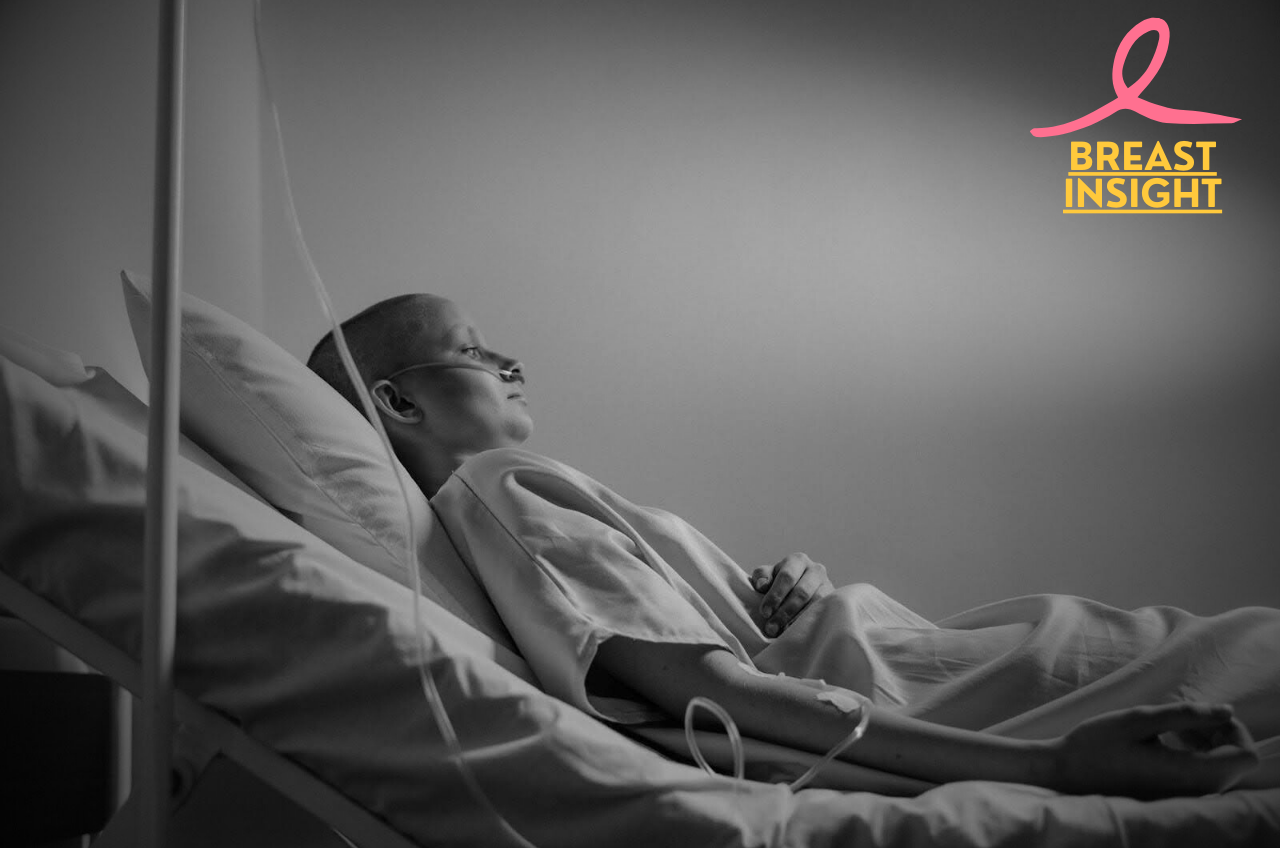Have you ever reflected on why chemotherapy is essential in treating breast cancer despite the advancements in medical science? This strong but challenging treatment is still crucial in the fight against one of the most common cancers affecting women around the world. What is chemotherapy, and how does it help in the fight against breast cancer?
Chemotherapy – this is often called a treatment, but “chemo” is how this particular journey is called, by itself. It is an overwhelming road on which one would go ahead in fear and promise: from unknown side effects to promises about becoming cancer-free. Many with breast cancer will face these chemotherapies long-term, affecting their psychological condition and daily routine to boot.
If you’re looking for more information on the broader context of breast cancer, including its causes, symptoms, and treatment options, you can explore our detailed guide here.
In this simplified, easy-to-understand guide, we will go about explaining chemotherapy in breast cancer treatment. We will help you learn the basics and look into some of the latest advancements. Whether patient, caregiver, or just looking at the topic, come along as we explore chemotherapy and how it plays a role in this strong fight against breast cancer.

Understand Chemotherapy for Breast Cancer
A. Definition and purpose of chemotherapy
Chemotherapy is an aggressive treatment of breast cancer that uses medications to destroy cancer cells or halt their development. Its intention is to eliminate cancerous cells from every area of the body, not just in the breast. Because this approach makes chemotherapy very suitable for:
- Shrink tumors before surgery (neoadjuvant chemotherapy)
- Remove remaining cancerous cells following surgery (adjuvant chemotherapy)
- Metastatic breast cancer that has spread to other parts of the body
B. Chemotherapy drug types
There are different classes of chemotherapy drugs, and several may be used at different times for the most effective treatment of breast cancer. Common classes include:
| Drug Class | Examples | Mechanism of Action |
| Anthracyclines | Doxorubicin, Epirubicin | Damage DNA in cancer cells |
| Taxanes | Paclitaxel, Docetaxel | Interfere with cell division |
| Alkylating agents | Cyclophosphamide | Modify DNA structure |
| Antimetabolites | 5-Fluorouracil, Capecitabine | Disrupt DNA synthesis |
C. When to consider chemotherapy
Oncologists base recommendations for chemotherapy on several factors:
- Stage and grade of cancer
- Tumor size and involvement of lymph nodes
- Hormone receptor status (ER/PR)
- HER2 status
- General health and patient preferences
Chemotherapy is commonly recommended for:
- Triple-negative breast cancers
- HER2-positive breast cancers
- Large tumors or those that have spread to lymph nodes
- Aggressive or fast-growing cancers
If you’re feeling anxious about the next steps in your journey, especially regarding procedures like biopsies, you can find helpful advice to stay calm here.
With this information as the basics of chemotherapy for breast cancer, it’s time to go to the treatment itself.

The Chemotherapy Process
Now that we grasp the fundamentals of chemotherapy as a treatment for breast cancer, let’s discuss in more detail the actual process that involves this treatment.
A. Pre-treatment preparations
Important steps that patients undergo prior to starting chemotherapy include:
- Medical assessment
- Port placement is required if needed
- Tests for baseline: blood work; heart function tests
- Preparation and counseling of patient
B. Administration methods
Chemotherapy may be administered in these methods:
| Method | Description | Advantages |
| Intravenous (IV) | Drugs delivered directly into a vein | Quick absorption, precise dosing |
| Oral | Pills or liquids taken by mouth | Convenient, can be taken at home |
| Intramuscular | Injection into a muscle | Slower absorption, longer-lasting effects |
C. Treatment cycles and period
Chemotherapy is typically administered in cycles, with periods of treatment alternating with periods of rest. The duration of the cycles varies with:
- Stage of cancer
- Type of drugs
- Response of the patient to the treatment
A typical cycle may take 2-3 weeks, while the entire treatment may last 3-6 months.
D. Side effects control during treatment
Side effects often occur during chemotherapy, but most can be controlled very well:
- Nausea and vomiting: Anti-emetic drugs
- Fatigue: Resting adequately and engaging in light exercise
- Hair loss: Cooling the scalp or wearing wigs
- Infections: Preventive antibiotics and good hygiene
If you’re interested in learning more about advanced imaging techniques like breast MRI and how they play a role in the diagnosis and monitoring of breast cancer, you can read about the insights, benefits, and limitations here.
Next, we will focus more on the side effects of chemotherapy and discuss comprehensive management strategies.
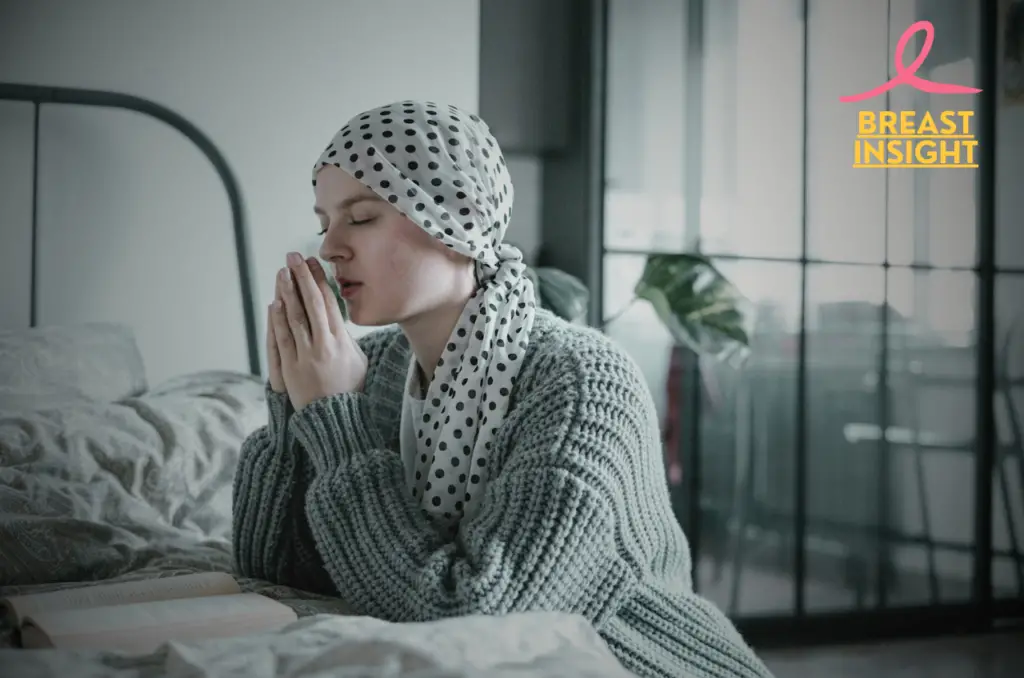
Side Effects and Their Management
Having discussed the chemotherapy process; we now discuss the possible side effects and how to handle them well. The side effects of chemotherapy in treating breast cancer can be different from one another: short-term or long-term, but there is always a way to deal with them and some support systems for patients to have a comfortable experience during treatment.
Common short-term side effects
Chemotherapy can cause many side effects that are temporary and that go away when treatment is completed. These can include:
- Feeling queasy and vomiting
- Feeling tired
- Loss of hair
- Not feeling like eating
- Sores in the mouth
- Increased likelihood of infections
Long-term side effects and risks
Some side effects may persist or even appear after treatment has been completed:
- Changes in memory (“chemo brain”)
- Heart problems
- Infertility and related issues
- Increased risk of developing other cancers
Ways to Manage Side Effects
| Strategy | Description |
| Medication | Anti-nausea drugs, pain relievers |
| Nutrition | Balanced diet, small frequent meals |
| Exercise | Light physical activity, as tolerated |
| Rest | Adequate sleep, short naps during the day |
| Complementary therapies | Acupuncture, meditation, yoga |
Support systems and resources
- Oncology social workers
- In-person and online support groups
- Patient advocacy organizations
- Hospital counseling services
The management of chemotherapy side effects is also crucial in breast cancer treatment. Patient preparedness for such difficult times and having some arrangements ready beforehand will better face the ordeal of chemotherapy. If you’re interested in learning more about the importance of early detection through mammograms and how they can save lives, check out this helpful guide. In the following section, we look at the performance of chemotherapy in the treatment of breast cancer.
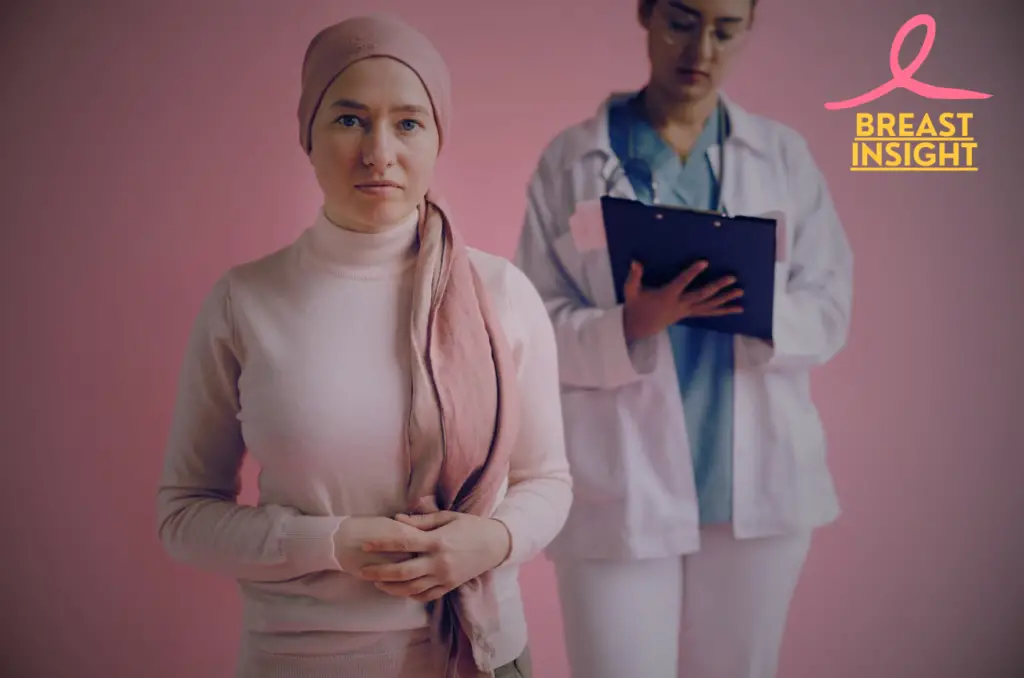
Chemotherapy’s Efficacy against Breast Cancer
Success rates and statistics
Chemotherapy has significantly improved the breast cancer patients’ conditions for years now. Recent studies have shown that the 5-year survival rate of patients with breast cancer who are undergoing chemotherapy is now approximately 90% for early-stage cancers. Success rates, however, depend on the stage and type of cancer.
| Stage | 5-Year Survival Rate |
| I | 98-100% |
| II | 85-99% |
| III | 66-85% |
| IV | 27% |
Factors influencing treatment outcomes
Many factors influence how effective chemotherapy is for breast cancer:
- Cancer stage and grade
- Hormone receptor status: ER/PR
- HER2 status
- Patient’s overall health
- Timeline of chemotherapy-neoadjuvant vs. adjuvant
- Types and combinations of drugs used
Chemotherapy in combination with other treatments
Combining chemotherapy with other treatments usually leads to better outcomes. Some common combinations are:
- Chemo + Surgery: Neoadjuvant chemotherapy can make tumors smaller before surgery, which helps in removing them.
- Chemo + Radiation: This had more lethal effects on cancerous cells with no probability of cells re-growing and surging back.
- Chemotherapy and targeted therapy: Patients with HER2-positive breast cancer would have greatly benefited from drugs like Herceptin in the presence of chemotherapy.
Chemotherapy is getting better because of ongoing research and new targeted treatments. This gives hope for better outcomes for breast cancer in the future. If you’re interested in understanding more about diagnostic techniques like breast ultrasound and their breakthroughs, check out this in-depth article.
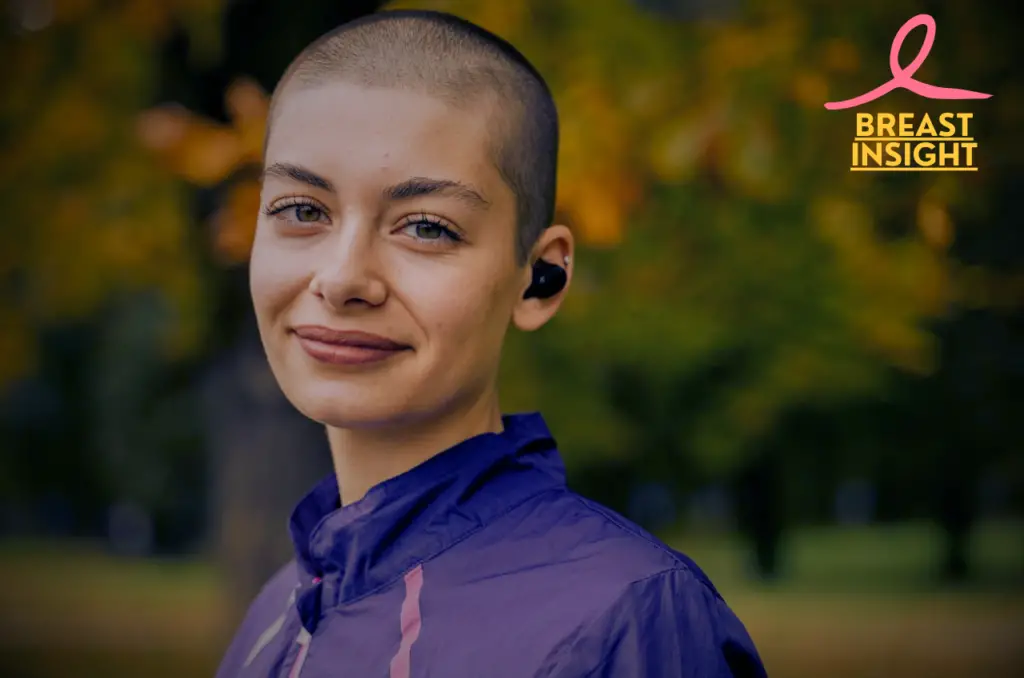
Advances in Chemotherapy among Breast Cancer Patients
With increasing knowledge about breast cancer, so do the treatment option available for the patients. In the last few years, the chemotherapy has undergone several advancements that have greatly improved the outcome and quality of life for patients with this disease.
Targeted Treatments
Targeted therapies are the biggest developments in the treatment of breast cancer so far. Targeted therapies look at specific characteristics of cells that cause cancer, contrary to chemotherapy that affects everything that grows fast.
| Therapy Type | Target | Examples |
| HER2-targeted | HER2 protein | Trastuzumab, Pertuzumab |
| CDK4/6 inhibitors | Cell cycle proteins | Palbociclib, Ribociclib |
| PARP inhibitors | DNA repair enzyme | Olaparib, Talazoparib |
These treatments normally have fewer side effects and work better than the standard chemotherapy.
Tailored treatment interventions
Personalized medicine has replaced the “one-size-fits-all” time of treatment. Today, doctors treating cancers use genetic tests and molecular profiles to create treatment plans customized to each patient’s type of cancer.
- Genomic assays-for example, Oncotype DX or MammaPrint-assist in predicting risk of recurrence and guide treatment decisions
- Liquid biopsies enable doctors to monitor how well the treatment is going and if resistance begins early.
- AI tools assist in selecting treatments based on millions of patient results.
Current Researches and Medical Tests
The area of breast cancer treatment with chemotherapy is changing quickly, with many clinical trials looking into new methods:
- Immunotherapy combinations
- Antibody-drug conjugates
- CRISPR gene editing tools
- Nanoparticle drug delivery systems
These enhancements hold promise for improved efficacy and reduced side effects in the treatment of breast cancer. To learn more about how early detection can improve treatment outcomes, check out this insightful article.

Life during and after chemotherapy
Maintaining overall health and well-being
During and after chemotherapy for breast cancer, one should always maintain overall health. Focus on:
- Good nutrition
- Adaptive exercise
- Ample resting and sleeping
- Stress management techniques
| Aspect | Importance | Tips |
| Nutrition | Supports recovery | Eat nutrient-rich foods, stay hydrated |
| Exercise | Boosts energy and mood | Start with gentle activities, gradually increase |
| Rest | Aids healing | Prioritize sleep, take short naps when needed |
| Stress management | Improves quality of life | Try meditation, yoga, or counseling |
Continuing treatment and surveillance
Regular follow-up appointments are essential to monitor recovery and detect any potential recurrence early. These typically include:
- Medical examinations
- Imaging tests: mammography, MRI
- Blood Tests
Emotional and Psychological Support
There could be very strong feelings caused by having the cancer and chemotherapy. Seek out support through:
- Self-help groups
- One-to-one counseling
- Online communities
Getting back to normal
Finally, recovery involves a slow return to normal activity.
- Discussing a return-to-work plan with your employer
- Slowly reintroducing hobbies and social activities
- Be gentle with how your body heals
Remember, life after chemotherapy will be all right, taking time to heal. Most of the patients who survived from breast cancer can lead normal happy lives when given the proper care and assistance. Your health team will remain to be very important as you move to this new stage of survival.
For those facing more advanced challenges, such as metastatic breast cancer, it’s essential to understand the steps to manage the condition effectively. Check out this helpful guide on conquering metastatic breast cancer in 5 steps.
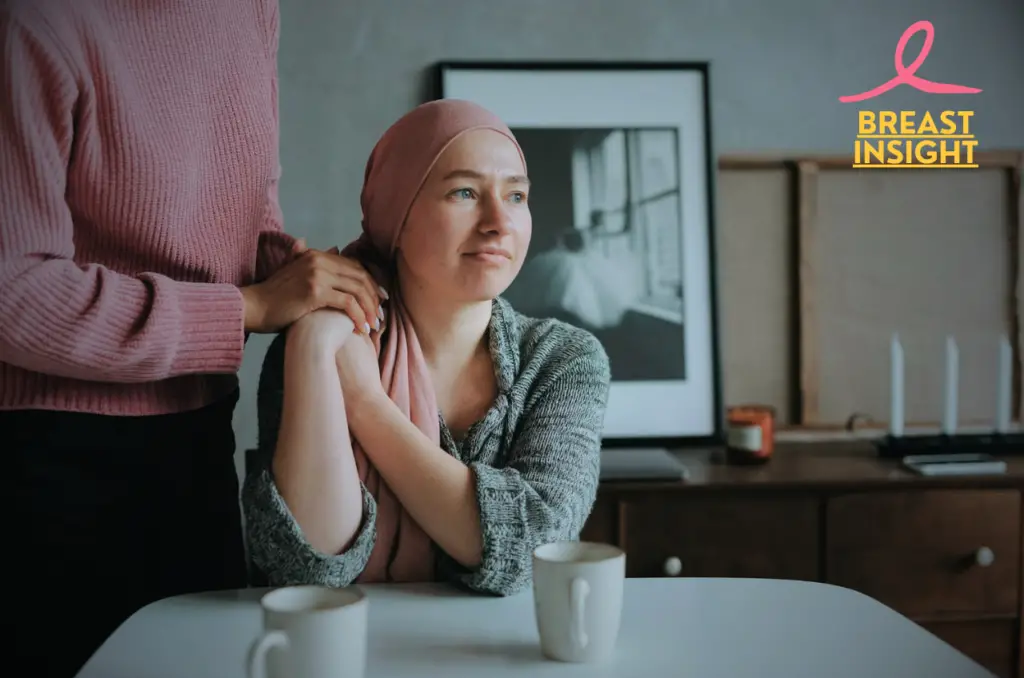
Conclusion
Chemotherapy is an important part of the treatment for breast cancer. It gives hope and better results for many patients. With knowledge of the process and how to deal with side effects, the patient and family can handle this tough journey with information and help. The success of chemotherapy in the treatment of breast cancer keeps getting better because of new medical research and tailored treatment methods.
When considering the future, it should always be kept in mind that life during and after chemotherapy is a journey of strength and change. Staying well-informed, good communication with doctors, and support from family, friends, and support groups make a positive change for better experiences while receiving treatments and help in the journey toward health recovery. If you are a patient, caregiver, or just want to know more about breast cancer treatment, remember that the more you know, the harder you fight against this disease.
Frequently Asked Questions (FAQs)
What is chemotherapy for breast cancer?
1. Chemotherapy is a treatment that uses drugs to kill or prevent the growth of cancer cells.
2. Targets rapidly proliferating cells, including malignant ones, throughout the entire body.
3. In breast cancer, chemotherapy is often used neoadjuvantly to shrink the tumor before surgery or adjuvantly to kill any remaining cancer cells after surgery.
4. It can also be applied to metastatic breast cancer; it controls the disease and relieves symptoms.
What are the common side effects of chemotherapy for breast cancer?
Fatigue: It is common, often disabling, with the presence of extremely exhausting symptoms upon rest.
Nausea and vomiting: Induced by the drugs damaging the stomach lining, though drugs are present to combat this.
Hair loss: Most chemotherapy drugs cause hair loss but hair grows back generally once treatment has stopped.
Risk of infection: Chemotherapy reduces the body’s immunity, hence making it more vulnerable to infections.
Loss of appetite or gaining weight: Some lose their appetite while others gain weight for either metabolic or psychological reasons.
How long is chemotherapy treatment to carry out in breast cancer?
1. In general, breast cancer chemotherapy lasts around 3-6 months although it would all depend on a person’s plan.
2. This is given usually in cycles, meaning that there is a phase of treatment followed by a rest period that allows the body to recover.
3. Common Treatment In chemotherapy, given every 2 or 3 weeks for a few months, using different drugs in each cycle to attack the cancer from different angles.
4. The cycle number and duration vary with factors such as the stage of the cancer, tumor size, and patient response to treatment.
Can chemotherapy cure breast cancer?
1. Chemotherapy is said to increase the possibility of recovery or remission while not curing all breast cancer.
2. In early-stage breast cancer, chemotherapy can destroy remaining cancer cells after surgery, reducing the risk of recurrence.
3. Chemotherapy can treat extensive disease and prolong survival as a therapy for advanced or metastatic breast cancer, but it may not necessarily cure the disease.
4. The effectiveness of chemotherapy hinges on various factors, such as the specific type of breast cancer, the genetic markers associated with the malignancy, and the patient’s overall health.

